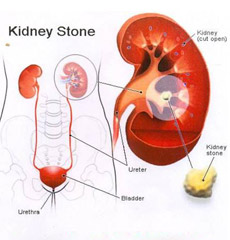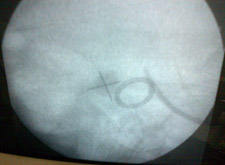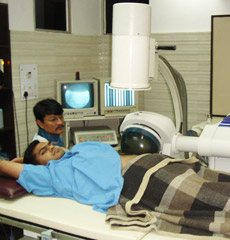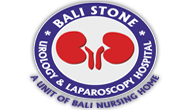LITHOTRIPSY


Lithotripsy is a method of breaking the stone while it is still inside the body. It is a non invasive procedure that does not require any cut or hole in the body. During lithotripsy electromagnetic shocks waves are passed harmlessly through the body targeting only the stone, causing it to break up into sand like particles. These small particles are then passed out of the body along with the urine.

The lithotripsy procedure is done in a lithotripsy specialised centre and takes about an hour to be done. This is done on the same day care basis, usually without anaesthesia. Some analgesia and sedation may be given to allay the patient's anxiety and make him relax or go to sleep. The stone is localised with high frequency digital C-arm and the shock waves are focused on the stone. The patient may feel a tapping sensation during the procedure. If a large stone fragment remains after treatment a second sitting may be required after 7 – 10 days.




After the procedure the patient will be monitored for an hour or so, after which he will be allowed to go home. He will be required to take a lot of fluids and some mild painkillers and antibiotics. It may take a few days to several weeks for the stone particles to be passed out completely. It is normal for urine to be cloudy or blood stained for a few days post procedure. It is a good idea to pass urine via a tea filter for a few days and collect the gravel which is passed out. This is usually tested subsequently and helps in planning dietary control to prevent recurrences. Usually a routine examination and an X-ray KUB may be required after 10 days to check for complete stone clearance.
Lithotripsy is usually safe for patients from the age of 2 years on wards. Absolute contraindications include pregnancy and bleeding disorders. Patients on blood thinners need to stop them for at least 5 days prior to the procedure. Depending upon certain factors a D-J Stent may be inserted prior to the procedure which is temporary and would be removed after some days .Stones in non functioning kidneys are obviously not suitable for this procedure as the stone fragments will not pass out. Anatomical obstructions of the urinary tract distal to the calculi may need additional treatment.




